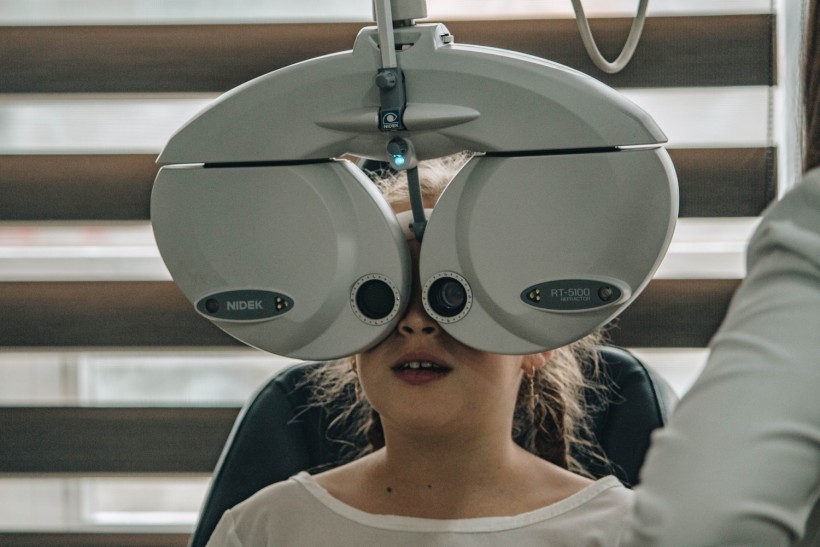A gene therapy that rehabilitates cilia defects in retinal cells has been developed by researchers at the National Eye Institute (NEI), which was published in Stem Cell Reports. This abnormality is impacted by a disease that causes blindness in early childhood known as the Leber congenital amaurosis (LCA).

Eye test
Gene Augmentation Therapy to Cure Blindness
Researchers revealed that a particular type of LCA brought on by mutations in the NPHP5 (also known as IQCB1) gene causes significant abnormalities in the primary cilium, a structure present in almost all human cells, using patient-derived retina organoids, or retinas-in-a-dish. The group created an IQCB1/NPHP5 gene augmentation therapy using an adeno-associated virus (AAV) that improved the illness phenotype in NPHP5-LC retinal organoids.
The scientists at the NIH Clinical Center obtained stem cell samples from two patients with NPHP5 deficiency, according to Genetic Engineering and Biotechnology News. Retinal organoids, cultivated tissue clusters that share many of the morphological and functional characteristics of the native retina, were created using these stem cell samples.
Dermal fibroblasts from NPHP5-LCA patients were used to create induced pluripotent stem cells (iPSCs), which were then developed into retinal pigment epithelium (RPE) and retinal organoids for the purpose of in vitro disease modeling.
The retinal organoids displayed a considerable restoration of opsin protein concentration in the appropriate place in the outer segments after the researchers administered an AAV vector encoding a functional version of NPHP5 as a gene therapy vehicle. The results also suggested that the primary cilium gate may have been stabilized by functioning NPHP5. Further analysis of NPHP5 roles in photoreceptor cilia should be aided by the development of patient-specific retinal organoids.
NPHP5 Deficiency Results in Childhood Blindness
In its less severe variants, NPHP5 deficiency results in early blindness, and in its more severe versions, many individuals also have renal illness in addition to retinal degeneration, according to Anand Swaroop, PhD, senior investigator at the NEI Neurobiology Neurodegeneration and Repair Laboratory, who is also the study's principal investigator.
He said that they developed a gene therapy strategy that could help kids with this condition avoid blindness and one that, with more investigation, might even help treat other side effects of the disease. "It's so sad to see little kids going blind from early onset LCA," he added.
Leber Congenital Amaurosis
Leber congenital amaurosis (LCA) is an uncommon form of genetic eye disorder that results in significant vision loss at birth, according to University of California San Francisco Health. It affects two to three out of every 100,000 newborns and is the most frequent genetic cause of inherited blindness in children. Both the central cone cells, which are in charge of fine detail and color vision, and the peripheral rod cells, which allow a person to see at night, are impacted by LCA.
The light-sensing retina at the rear of the eye degenerates as a result of the rare genetic condition known as LCA. LCA can be caused by at least 25 distinct gene defects. One variant of LCA can be treated using gene therapy, but all other forms of the condition are incurable.
ALSO READ: Study: New Eye Drops Can Prevent Common Root of Blindness
Gene Mutation Containing IQCB1/NPHP5
According to the scientists, the most frequent cause of renal-retinal Senior-Lken syndrome (SLSN) and non-syndromic Leber congenital amaurosis (LCA) is mutations in the gene encoding IQ calmodulin-binding motif containing B1 (IQCB1/NPHP5).
In contrast, visual function impairments are seen in early childhood and have a major influence on patients' quality of life, making photoreceptors an essential target for therapeutic development. It is noteworthy that patients with SLSN display varying degrees of renal disease.
RELATED ARTICLE: Gene Therapy Gives Vision to Visually Impaired Patients Since Childhood, Study Reveals
Check out more news and information on Medicine and Health in Science Times.














